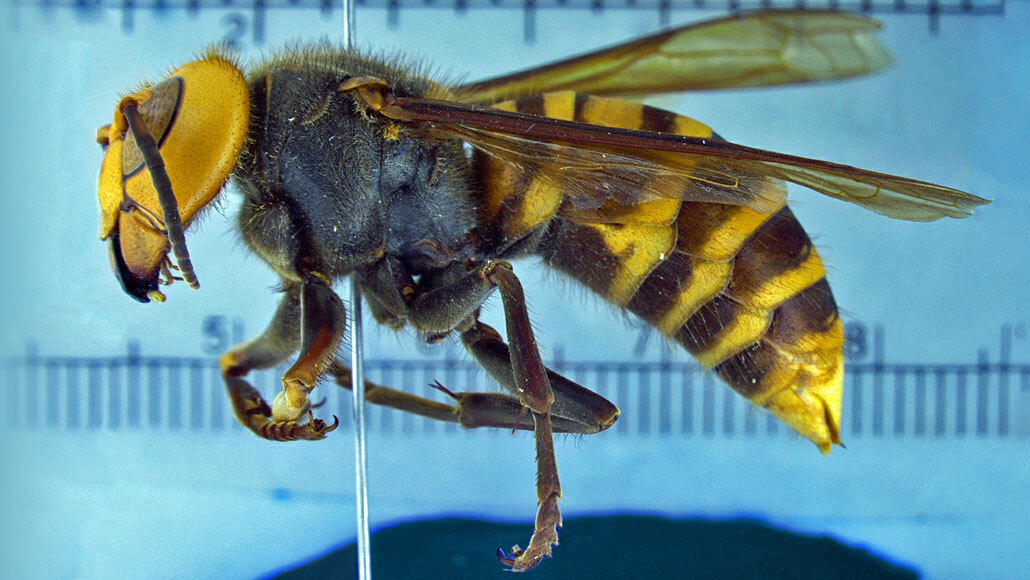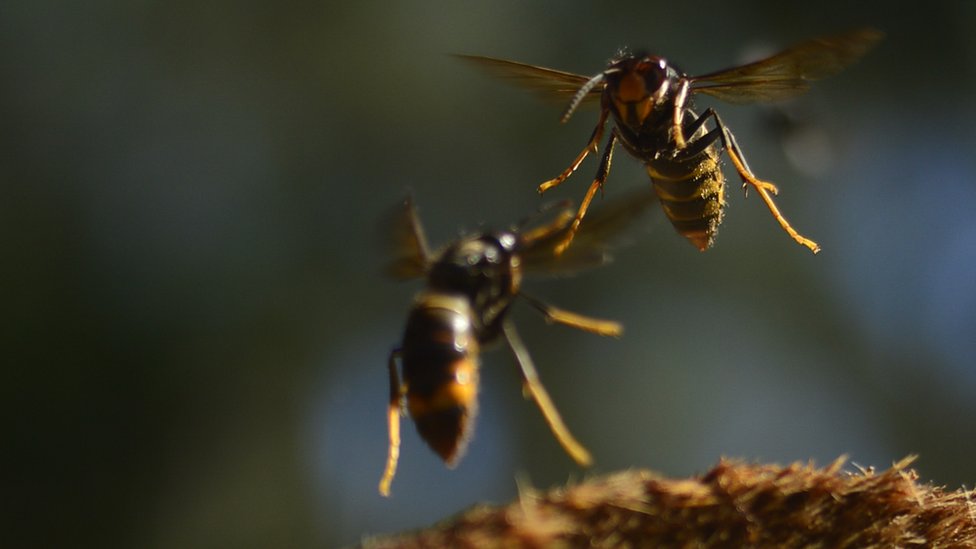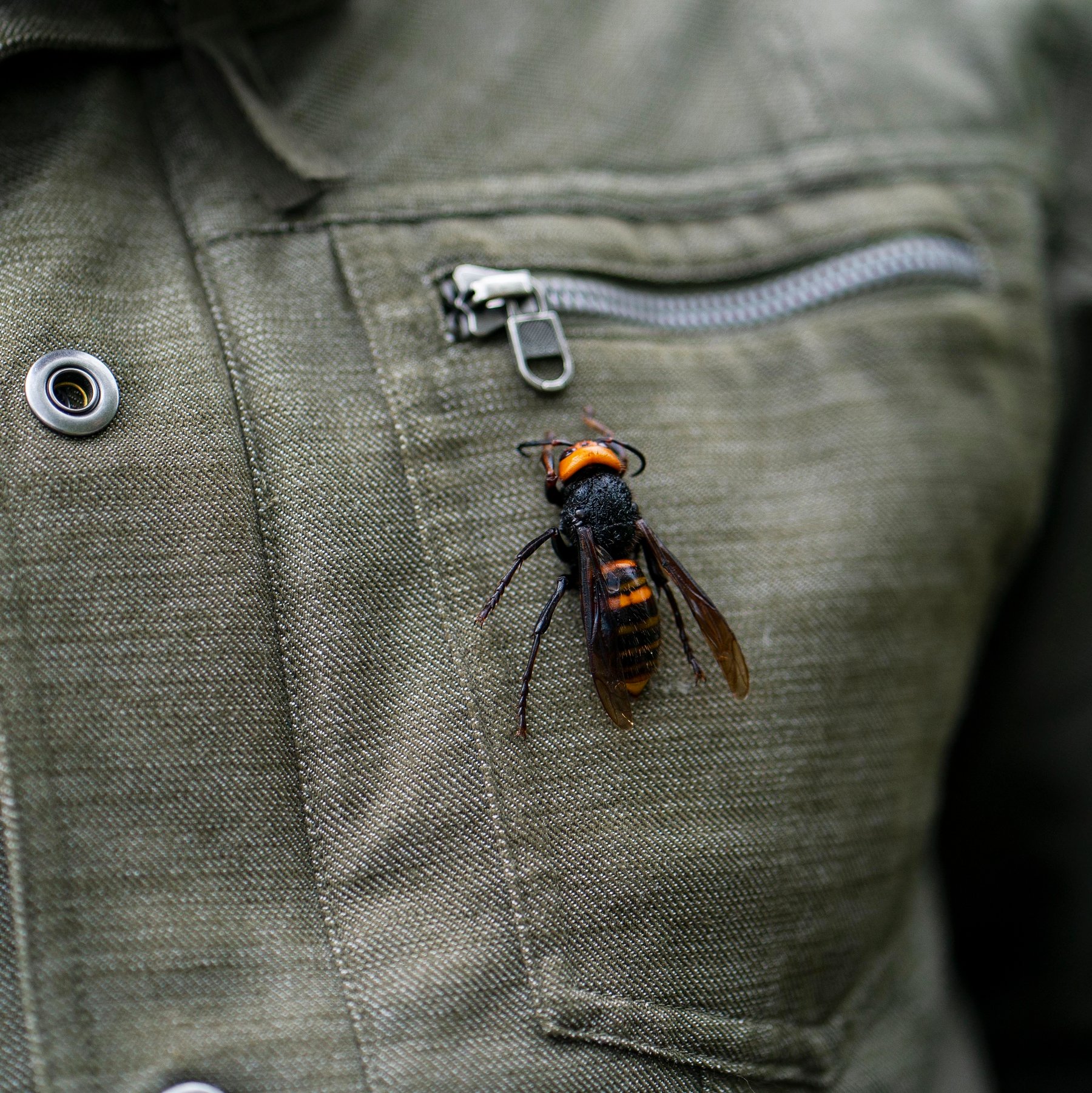In August 2023, a beekeeper near Savannah, Georgia, observed a peculiar predator targeting his honeybees. The insect, black with bright yellow legs, was identified as the yellow-legged hornet (Vespa velutina). This invasive species, known for its destructive behavior, had made its way to North America. Lewis Bartlett, an ecologist at the University of Georgia, recognized the hornet from his previous studies in England. The hornet, native to regions from Afghanistan to eastern China and Indonesia, has expanded its territory over the last two decades to South Korea, Japan, and Europe, preying on honeybees, bumblebees, and other insects.

Impact and Spread of the Hornet
The yellow-legged hornet’s arrival in new territories is marked by significant destruction. Capable of killing dozens of honeybees daily, it also deters bees from foraging, severely impacting colonies. In Europe, its presence has led to dramatic declines in honey production. For instance, some regions in Portugal have seen a 35% drop, and French beekeepers have reported losses of 30% to 80% in colonies, costing the economy around $33 million annually.
The hornet’s invasion in Europe is believed to have started from a single mated queen that arrived in Bordeaux, France, in a shipment from China before 2004. From there, it spread rapidly, crossing borders into Spain, Portugal, Italy, Belgium, Germany, the Netherlands, the UK, and Switzerland at a rate of up to 60 miles per year.
Response and Eradication Efforts
The discovery of the yellow-legged hornet in Georgia prompted immediate action. The state’s agricultural commissioner urged residents to report sightings of the hornet and its nests, warning of the potential threat to the $73 billion agriculture industry, which heavily relies on pollinators. Within weeks of the first sighting, scientists located a nest in a tree and conducted a night operation to eradicate it. This involved spraying the nest with insecticide and removing it.
Bartlett and his team have since been setting traps and tracking hornets to locate additional nests. By the end of 2023, they had removed five nests. Bartlett expressed optimism about early detection, suggesting that eradication was still possible if aggressive measures were taken.
Global Invasion and Management Strategies
Yellow-legged hornets and other social wasps are formidable invaders, successfully colonizing every continent except Antarctica. These wasps live in colonies with complex social structures, allowing them to efficiently divide labor and adapt to new environments. In their native ranges, they face predators like skunks and birds, but in new territories, their impact can be devastating due to the lack of natural predators.
Efforts to control invasive wasps have included various methods such as fire, boiling water, traps, poison, and brute force. In New Zealand, selective poison bait has been used to suppress populations, but reinvasion remains a challenge. Recently, scientists have begun exploring biological control methods, such as introducing predators like European hoverflies that parasitize wasp nests.

Future Prospects
Back in Georgia, Bartlett’s genetic analysis indicates that the yellow-legged hornets originated from a single queen that likely arrived in late 2022. While efforts to track and destroy queens have shown some success, the hornet’s potential to spread rapidly poses a significant challenge. Bartlett remains committed to protecting the beekeeping industry and preventing the hornet from becoming a permanent fixture in North America. The fight against the yellow-legged hornet is ongoing, and its outcome will depend on continued vigilance and effective management strategies.
